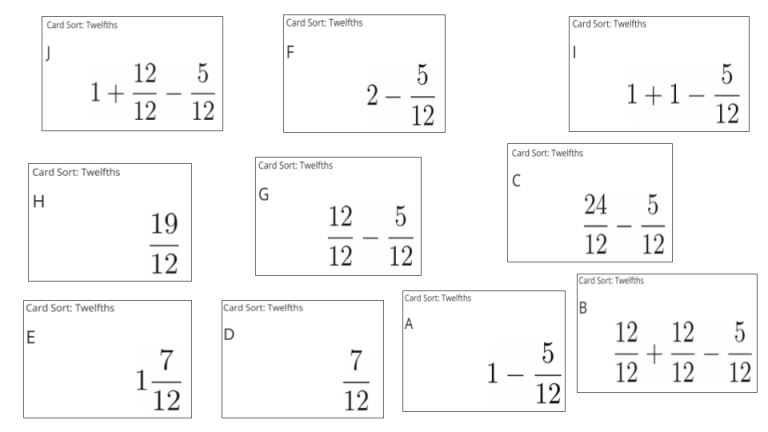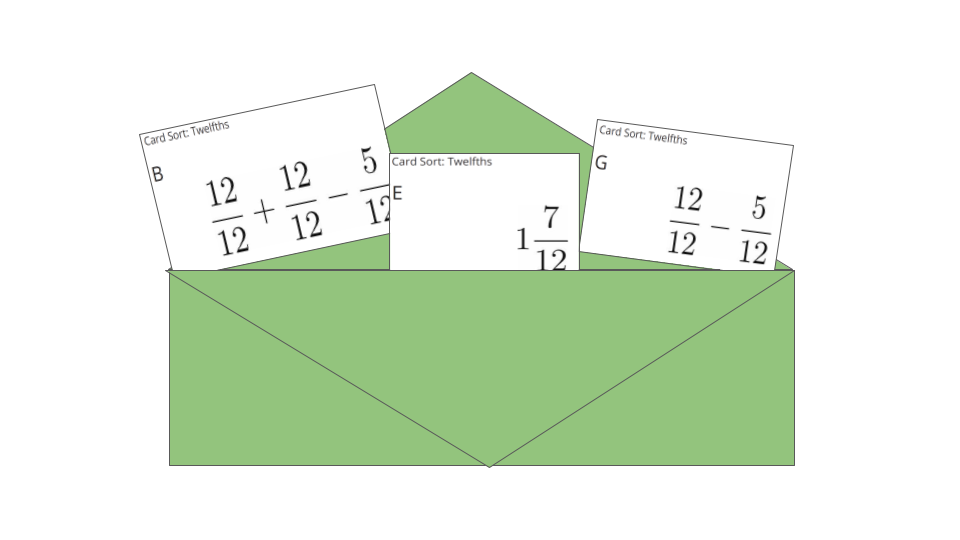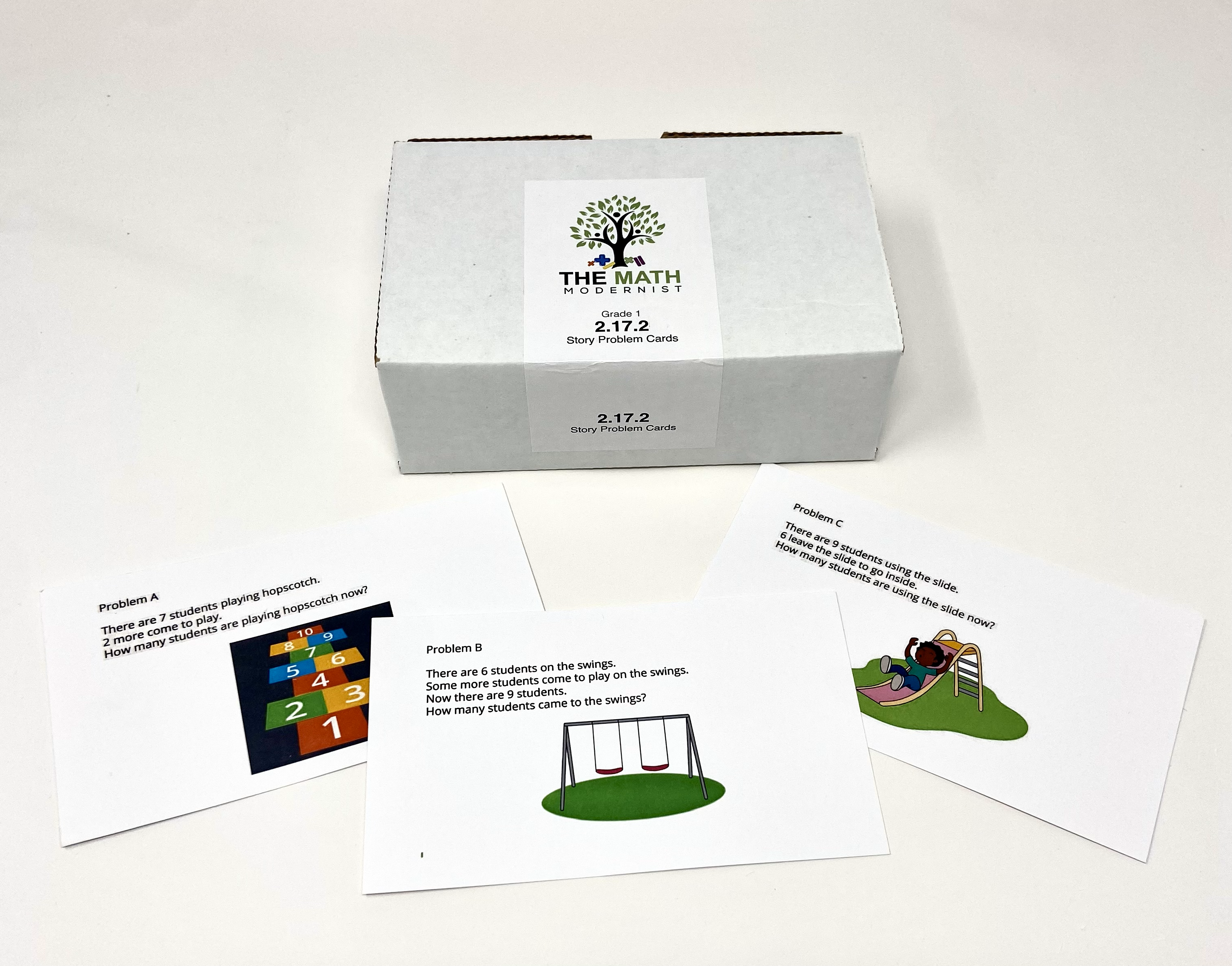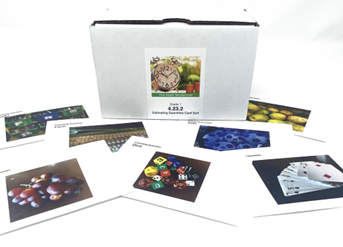Do you know that feeling when the buzz in your classroom feels organic - where there is a palpable sense of meaning-making and joy? Great teachers have a seemingly magical way of curating these experiences for students. In this blog, we explore how card sorts can help teachers to elevate classroom engagement and discourse, and we will dig deeper into how teachers can leverage the low floors and high ceilings of card sorts to scaffold and enrich students’ experiences, resulting in all learners feeling excited, supported, extended, and happy as learners.
Let’s start with card sorts themselves. The most effective card sorts are:
Open-Ended
Students should be given the freedom to zero in on each card and to make meaning of it. Then, as they understand each one - the images, the numerical expressions, the language - they come to draw connections between them.
Flexible
A good card sort offers many possibilities for creating sorted pairs or groups of cards, providing the doorstep for all students to enter into the work and to have their voice amplified.
Varied
When card sorts provide a variety of expressions and equations, representations, and words, they provide access for students who may be confident in one but not in the other, and they also create numerous opportunities for teachers to work flexibly with their students to make meaning.
It is even better when the card sorts are prepared for teachers, so that they can focus on the learning and thinking of their students.
Here is a sample card sort from our Grade 4 Card Decks based on IM K-5 Math™ authored by Illustrative Mathematics®.

Consider how students might feel receiving all of these cards at once.
- How might they approach this sort?
- What might you monitor for?
- What informal or formal language might you hear?
Now consider this same sort without all of the cards. Three cards are held back in an envelope that will be distributed after students have completed their initial sort.


How might this scaffold support student thinking?
How would students respond to the new cards?
What language might you hear? What might students do?
The Benefits
- Fewer cards for students who might be anxious
- The opportunity to isolate an understanding (such as 12/12 = 1 or a fraction greater than 1 can be represented as a mixed number) and to listen in closely after adding the second round of cards
The greatest benefit to leveraging card sorts in this way is giving ALL
students access to grade level work.
What about students who are quick finishers?
You know the ones - they’ve found every possible way to sort and are ready for more.
Want to extend a card sort? Give students some post-it notes or index cards when they are done with their sort and invite them to create new cards for a more complex, higher ceiling task for students to engage with. There are lots of ways that you can extend a card sort simply by asking students to move beyond sorting and into creating.
Consider the sort below from Grade 2 that has already been completed by a group of students.
Where can this be extended? What cards might students add?




Extend a Card Sort by Creating
Ask students to create a new card for a set using a representation that is present in other sets but not in all
Ask students to create new cards for each set using a new representation of their choice
Ask students to create a whole new set using all of the representations
Want to know more about how we support classrooms with rich card sort experiences? Visit us at TheMathModernist.com OR email us at sales@www.themathmodernist.com!




